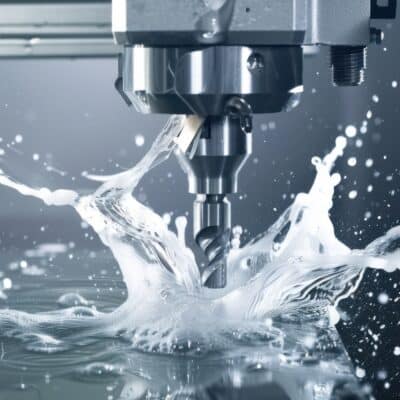CoolantCare Fluid Management Service
CoolantCare Fluid Management Service from Kernow Oils is a tailored fluid management programme that keeps your coolants performing at their best. We combine on-site sampling, dip-slide microbiology, concentration & pH checks, laboratory analysis and targeted remedial work to reduce downtime, extend coolant life and lower total operational cost — ideal for CNC machining, metalworking and industrial cooling systems across Cornwall and the South West. Put simply, CoolantCare manages your fluids effectively and efficiently.

Why CoolantCare Fluid Management matters
Small changes in coolant chemistry or hygiene can cause large operational problems. By using a service for CoolantCare Fluid Management, proactive control saves money and prevents failure.
- Corrosion & wear: incorrect pH or contamination accelerates machine and tool damage.
- Microbial growth: bacteria, fungi and biofilm cause odour, deposits and potential HSE issues.
- Contamination: tramp oil, metal fines and particulates reduce heat transfer and promote breakdown.
- Higher costs: frequent replacement, disposal and unplanned repairs increase operating expenses.
CoolantCare Fluid Management
Business benefits
- Lower coolant replacement and disposal costs
- Improved tool life and product quality thanks to comprehensive management of coolant care
- Reduced unplanned downtime and cleaner machine sumps
- Audit-ready performance records and trend data
Our CoolantCare Fluid Management Service Process
CoolantCare – Fluid Management Service is a practical, repeatable programme designed to identify issues early and deliver measurable improvements.
- Sample collection on-site: representative samples from sumps, return lines and tanks + visual inspection.
- Laboratory & dip-slide testing: concentration, pH, conductivity, microbiology and contamination assays.
- Interpretation & report: clear results, action list, and recommended service frequency.
- Remedial action: sump cleaning, dilution correction, biocide dosing, filtration or tramp-oil removal.
- Ongoing monitoring: monthly, quarterly or bespoke schedules with trend reporting.
- Record keeping: audit-ready logs to support compliance and continuous improvement.
CoolantCare Fluid Management Service – Key metrics we monitor
| Metric | Why it matters | Typical action |
|---|---|---|
| pH | Controls corrosion and chemical balance | pH correction, formulation check |
| Concentration/dilution | Ensures cutting performance and corrosion protection | Top-up or re-formulate to manufacturer spec |
| Total microbial load/dip slides | Detects bacteria and fungi growth | Biocide programme and cleaning |
| Tramp / free oil | Reduces heat transfer & promotes breakdown | Skimming, separation, filtration |
| Conductivity/ions | Signals contamination or chemical breakdown | Flush & rebalance or replace |
| Particulates/solids | Causes abrasion & tool wear | Filtration and housekeeping |
*Acceptable ranges vary by coolant type and manufacturer. We use supplier guidance and industry best practices to set targets.

Case Study – MJ Precision Engineering Ltd (Cornwall)
Client challenge: Frequent coolant replacement, odour and premature tool wear.
What we did: Initial audit and sampling showed low pH, high bacterial counts and free-oil contamination. We performed sump cleaning, corrected concentration and pH, implemented a targeted biocide programme and established monthly monitoring.
Results: Over 12 months, the site reduced coolant replacement by 30%, reported a ~15% reduction in tool wear and saw near-elimination of coolant-related downtime.
“CoolantCare gave us real control. We no longer dread coolant failures, and our costs have come down noticeably.” — Engineering Manager,
CoolantCare Fluid Management Service Process Common FAQ's
How often should coolant be tested?
Minimum monthly testing is recommended for most systems. High-use or high-risk applications may benefit from biweekly checks or continuous monitoring.
What contamination signs should I look out for?
Foul odours, visible biofilm, cloudy or milky fluid, foam, oil sheen, corrosion, or a drop in machining finish are all warning signs.
Can I top up coolant rather than replace it?
Top-ups are fine if guided by correct testing. Blind top-ups without analysis risk compounding concentration, pH or contamination problems.
Do you provide training?
Yes — operator training on sampling, daily checks and basic coolant hygiene is available as part of CoolantCare.
Ready to optimise your coolant system?
Book a CoolantCare audit or request a quote — we’ll assess your needs and deliver a tailored plan to cut costs and reduce downtime.
Contact us for a coolant audit/quote
Phone: 01736 757002 · Email: info@kernow-oils.co.uk
Related: Fluid Testing · Industrial Oils · Coolant best practices (blog)